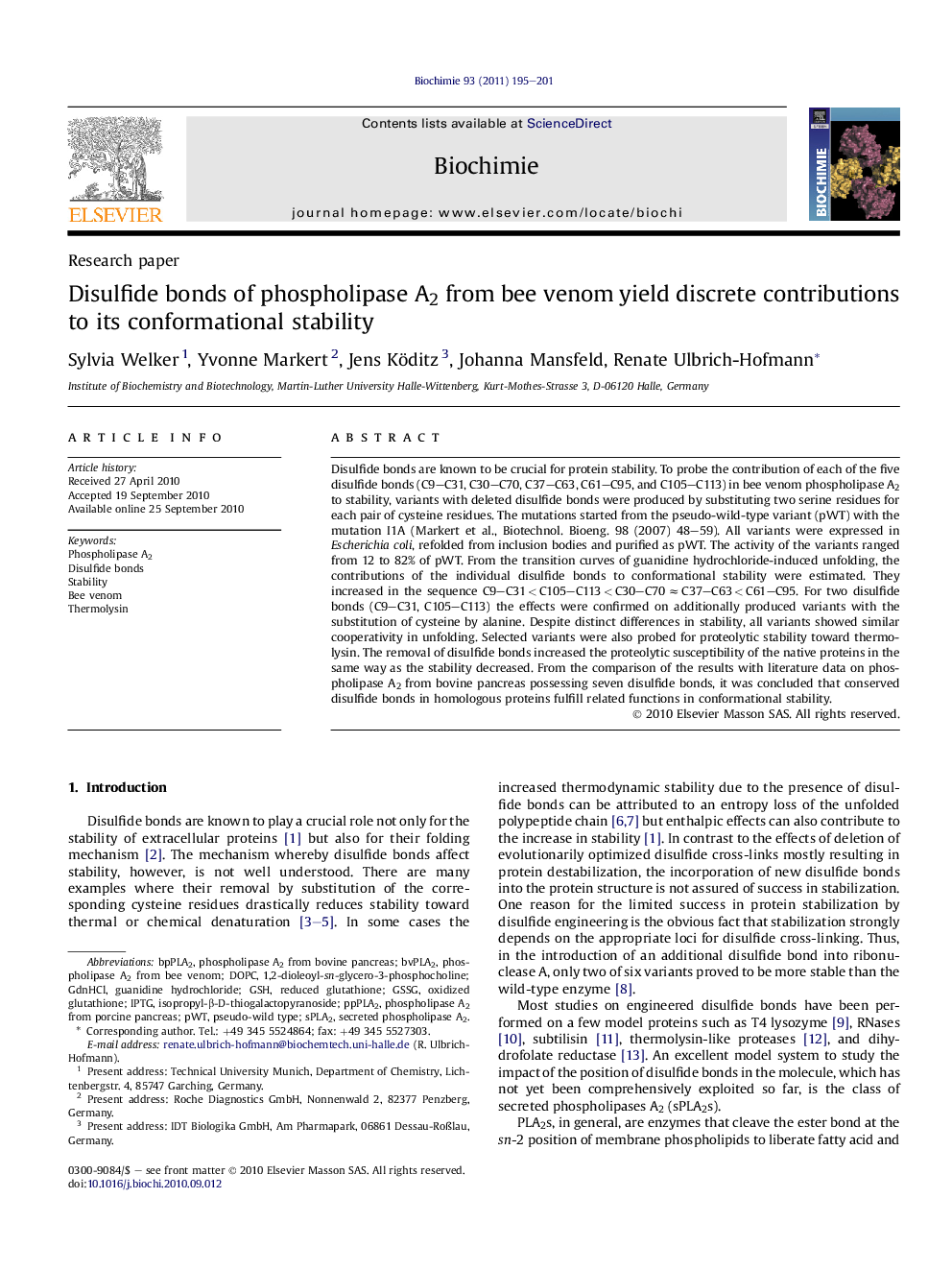| Article ID | Journal | Published Year | Pages | File Type |
|---|---|---|---|---|
| 1952501 | Biochimie | 2011 | 7 Pages |
Disulfide bonds are known to be crucial for protein stability. To probe the contribution of each of the five disulfide bonds (C9–C31, C30–C70, C37–C63, C61–C95, and C105–C113) in bee venom phospholipase A2 to stability, variants with deleted disulfide bonds were produced by substituting two serine residues for each pair of cysteine residues. The mutations started from the pseudo-wild-type variant (pWT) with the mutation I1A (Markert et al., Biotechnol. Bioeng. 98 (2007) 48–59). All variants were expressed in Escherichia coli, refolded from inclusion bodies and purified as pWT. The activity of the variants ranged from 12 to 82% of pWT. From the transition curves of guanidine hydrochloride-induced unfolding, the contributions of the individual disulfide bonds to conformational stability were estimated. They increased in the sequence C9–C31 < C105–C113 < C30–C70 ≈ C37–C63 < C61–C95. For two disulfide bonds (C9–C31, C105–C113) the effects were confirmed on additionally produced variants with the substitution of cysteine by alanine. Despite distinct differences in stability, all variants showed similar cooperativity in unfolding. Selected variants were also probed for proteolytic stability toward thermolysin. The removal of disulfide bonds increased the proteolytic susceptibility of the native proteins in the same way as the stability decreased. From the comparison of the results with literature data on phospholipase A2 from bovine pancreas possessing seven disulfide bonds, it was concluded that conserved disulfide bonds in homologous proteins fulfill related functions in conformational stability.
